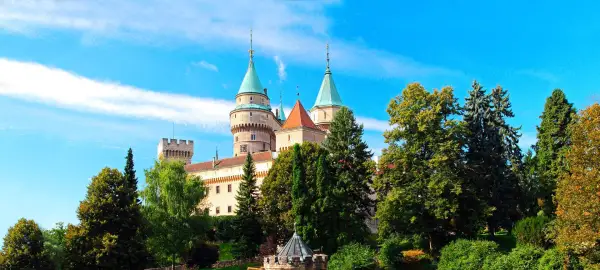- Overview
- Info & Inclusions
- Itinerary
- Map & Hotels
- Photos
- Dates & Prices
- Max Group Size 18
- Bratislava, including the historic Old Town
- Beautiful Pieniny National Park
- Budapest walking tour
- Holloko, Hungary's most beautiful town
- The "painted monasteries" of Bucovina
- Bran Castle, mythical home of Dracula
- Singles friendly (view options for single travellers)
We might also take the train ride through the Eastern Carpathian Mountains in Romania.
Not only do we have the chance to live out these experiences, but we can also relax in the bathhouses in Budapest, Hungary, or sit on the patios of one of the many coffeehouses in Bucharest, Romania.
The intricate stonework of the churches and monasteries that are scattered throughout these countries, or the music that fills the many market squares are some of the finer details we have time to admire during this 21-day trip.
When you sign on to our Slovakia Hungary & Romania tour, you are signing on to an extensive expose of natural beauty combined with some of mankind's most stunning architectural achievements.
- MealsSavour authentic flavours with included daily breakfasts and dinners at hotels or handpicked local restaurants—immersing you in local cuisine without worrying about reservations or budgets.
- Transport & Logistics
Private air-conditioned coaches and included internal ferries and flights—ensuring hassle-free travel so you can focus entirely on the discoveries ahead.
"Adventures Abroad tour leader's management and guest services managed the tour with great skill and dedication. The tour leader was on top of every move and transfer. We have not experienced any issues with logistics and had a great time."
~ JULIA O"The tour leader did an excellent job coordinating some difficult travel logistics, power outage issues and resolving problems and dealing with guests who had unrealistic expectations."
~ CYNTHIA COLLINS - Expert Guidance
Unlock insider secrets at every landmark with your full-time Tour Leader and expert local guides , all gratuities covered—no hidden tipping surprises—so you immerse fully in your destination's stories, worry-free. (Except for the tips to your tour leader at the end of your tour.)
"Amazing tour guide. Our tour guide was very well organized, Her passion, knowledge, and enthusiasm completely transformed the travel experience into something truly unforgettable..."
~ MELANIE LEMAIRE"Highly recommend every trip with Adventures Abroad. It's a well organized and well thought out adventure. The tour leaders are friendly, knowledgeable and experienced professionals. Highly recommend this company."
~ SUSAN WALL - Sightseeing & EntrancesAll entrance fees for sites visited as per the itinerary—no hidden costs—so you can explore ancient ruins and excursions with complete peace of mind.
- AccommodationsUnwind in clean, well-located 3 to 4-star hotels with private en suite facilities—handpicked for comfort and convenience after each day's discoveries—so you can rest easy knowing your stay supports the real adventure, not steals the spotlight.
- Small Group
Discover the world in small groups of up to 18 travellers plus your expert Tour Leader—unlocking spontaneity, off-the-beaten-path adventures, and genuine connections at a relaxed pace, free from crowds.
"Looking Forward to My Next Adventure The best feature of the Adventures tour was the small size that allowed the group to quickly load up, let everyone get acquainted within the first 24 hours, capitalize on unplanned surprises along..."
~ PHILIP BLENSKI"Good value for a great time I have traveled with Adventures Abroad for over 20 years now. Well thought out, interesting itineraries and the other travelers congenial and friendly. The price always seems fair and overall a..."
~ Trusted Customer - Airport Transfers For Land & Air CustomersWe handle hassle-free airport transfers for all our land and air tour customers—plus early arrivals or late departures when you book extra hotel nights directly with us for added peace of mind.
- International airfare to/from the tour. Tour Leader gratuities, lunches, drinks, personal items (phone, laundry, etc), domestic and international air taxes (if applicable), excursions referenced as 'optional'. Airport transfers for Land Only customers. Our post-reservation trip notes offer further guidance on optional meal costs and shopping.
- Seasonality and Weather:
This tour is offered in spring, summer and fall the most popular of which is are spring and fall when temperatures are relatively mild and crowds thinner. Showers quite possible in spring and fall, somewhat less so in summer though can occur any time. Summers can be humid though long daylight hours maximize exploration. - Transport and Travel Conditions:
Land transport throughout by private air-conditioned motor coach, 24-36 seats depending on ultimate group size (see 'group size').
Though we will have a couple of full bus days there are plenty of stops of interest. There may not be porters available in all locations. We also make use of public transit in some cities in order to maximize sightseeing where vehicles are impractical (most people quite enjoy this insight into daily life).
This trip is typical of most of our European tours, which are ambitious and involve full days of travel and sightseeing. While we don't have any actual strenuous activity (ie hiking) built into the program, you will do a lot of walking on this trip. These walks will mostly be in the form of walking tours of towns and cities and short walks to dinner. Being Europe, and a hilly/mountainous area, cobbles, uneven surfaces, and slopes/stairs are common. If you are accustomed to typical "bus tours," which rely heavily on vehicular transport for all sightseeing activities, you should be aware that this tour is considerably more active.
Am I suitable for this tour? Please refer to our self-assessment form - Activity Level: 2
These are particularly busy tours that feature a lot of moving around, sometimes by train and short journeys on local transport. Walking tours of towns and cities are leisurely but you should be prepared to be on your feet for several hours. Some of our cultural trips that occur at high altitude and/or require greater independence with baggage handling (at hotels, airports, train stations) also fall into this category.
To learn more about the Activity levels, please visit our tour styles page. - Accommodation:
Well-located, air- conditioned, mid-range hotels (3 star) throughout. Many are smaller properties (3-4 story) that may not have elevators. All hotels have en suite toilet and bath, though most have shower only. Porter service is sometimes available; you MUST be independent with your luggage. Single rooms are limited and likely smaller than twins. - Staff and Support:
Tour Leader, driver, local step-on guides in various locales. - Group Size:
Maximum 18 plus Tour Leader
- Day 1:Arrive in BratislavaArrive in Bratislava, capital of the Slovak Republic.
Overnight in Bratislava.
Included Meal(s): Dinner, if required - Day 2:Bratislava - Trencin: Castle TourThree different countries meet in Bratislava, where languages, traditions, and cultures create a unique microcosm of central Europe. This youthful, dynamic capital pulses with energy while remaining proud of its rich past, where tradition, nostalgia and music weave through cobblestoned streets.
Our morning city tour reveals Bratislava's main treasures: the historic Old Town with its medieval gates and towers, the Gothic Cathedral of St Martin where Hungarian kings were once crowned, and the 14th-century Tower of St Michael standing guard in the ancient city walls.
After lunch, we travel to Trencin in western Slovakia, one of the oldest Slovak cities, chronicled as early as the 11th century. Its strategic location near three Carpathian Mountain passes on the crossroads of ancient commercial routes determined the character of this significant landmark. The famous Amber Road, used by Etruscan, Greek, and later Roman merchants to transport precious amber from the Baltic region, passed directly through Trencin.
The city is dominated by Trencin Castle, Slovakia's third-largest castle complex. With extensive fortifications and several palace buildings surrounding the central medieval tower, it remains the highest point of the city. Below the castle, winding side streets and historic covered stairs lead to a charming small square, while the old town spreads around a large main square anchored by a baroque church.
Overnight in Trencin
Included Meal(s): Breakfast and Dinner - Day 3:Trencin - Bojnice - Ruzomberok - Horny SmokovecOur journey leads us through Slovakia's heartland via Bojnice, a charming town at the upper Nitra River that ranks among Slovakia's oldest spa destinations. Here stands the famous Bojnice Castle, a romantic fairy-tale structure that has served as the backdrop for countless films. We explore both the castle's opulent interiors and the picturesque town nestled just below its walls.
We continue through Ruzomberok, situated in the scenic Vah River Valley. Founded by German colonists in 1223, this town became renowned for its guilds, industrial production, and skilled craftsmen who travelled throughout Europe plying their trades.
Our destination is Horny Smokovec, gateway to the High Tatras National Park, founded in 1948 and forming the northernmost section of the Carpathian Mountains. This geographic region shelters numerous glacial lakes and displays a distinctly alpine character, with jagged peaks rising dramatically above pristine forests. The crisp mountain air and stunning vistas create an atmosphere worlds away from the valley towns below.
Overnight in Horny Smokovec
Included Meal(s): Breakfast and Dinner - Day 4:Pieniny National ParkWe venture into Pieniny National Park, the crown jewel among central Europe's most impressive areas of natural beauty. Our exploration begins at the medieval Cerveny Klastor, once a Carthusian monastery whose red-brick walls have witnessed centuries of spiritual contemplation alongside the rushing Dunajec River, which forms a natural border between Slovakia and Poland.
The open-air museum of folk architecture in Stara Lubovna offers a fascinating glimpse into traditional mountain life. Here we walk among a precious collection of wooden houses dating from the late 19th to early 20th century, each structure relocated and carefully preserved to show how mountain families lived and worked in harmony with their challenging environment.
After lunch, we continue to Kezmarok, where we visit the remarkable German-built wooden Lutheran Church, a unique masterpiece of carpentry and artistry. This extraordinary structure, built entirely without metal nails, demonstrates the incredible skill of 17th-century craftsmen who created one of Europe's most unusual religious buildings. The church's interior, carved entirely from wood, creates an atmosphere of warm spirituality unlike any traditional stone church.
Overnight in Horny Smokovec
Included Meal(s): Breakfast and Dinner - Day 5:Horny Smokovec - BratislavaA scenic mountain route leads us back to Bratislava, winding through the spectacular ranges of the High Tatras to the Low Tatras. Mountain peaks and hiking trails frame our journey, while still-green forests, bubbling streams, and traditional haystacks shaped like miniature peak-roofed houses dot the landscape. The contrast between Slovakia's alpine heartland and its Danube valley capital creates a perfect showcase of this young nation's geographic diversity.
We arrive in Bratislava by mid-afternoon, with time to rest and reflect on our mountain adventures before dinner. The journey from Slovakia's highest peaks to its historic capital reveals the remarkable variety contained within this compact Central European nation.
Overnight in Bratislava
Included Meal(s): Breakfast and Dinner - Day 6:Bratislava, Slovak Republic - Budapest, HungaryThe mighty Danube guides our morning journey from Bratislava to Budapest, Hungary's magnificent capital. Hungary reveals itself as a land of beautiful monuments and romantic music, where history resonates through every cobblestone and melody.
Buda and Pest, two of the city's three historic regions, face each other across the Danube, which forms the physical and spiritual centre of the Hungarian capital. This great river serves as the city's centrepiece, its heart, and its pulse, creating an even more intimate relationship than the Seine enjoys with Paris or the Arno with Florence.
Upon arrival, we embark on a walking tour of the city's urban heart, an area filled with stately old buildings, grand avenues, and countless narrow streets that tell Budapest's thousand-year story. We take local transport to the massive neo-Gothic Parliament (Orszaghaz), the most visible building on Budapest's left bank. Built by 1,000 workers between 1885 and 1902, this magnificent structure has become the symbol of the capital with its slender towers, spacious arcades, high windows and vast central dome.
Our route continues past the Museum of Ethnography to the stately Liberty Square (Szabadsag ter), then to Roosevelt Square and the famous Chain Bridge, the oldest and most beautiful of seven road bridges spanning the Danube in Budapest. Before its construction, the river could only be crossed by ferry or by a pontoon bridge that had to be removed when ice blocks floated downstream in winter.
Overnight in Budapest
Included Meal(s): Breakfast and Dinner - Day 7:Budapest: City TourHeroes' Square provides our dramatic starting point, where we learn about Hungary's complex thousand-year history at the imposing Vajdahunyad Castle. This eclectic structure showcases different periods of Hungarian architecture, from Romanesque to Gothic to Renaissance styles.
We then cross Margaret Bridge to Buda's hilly side, where the Citadel offers panoramic views of the entire city spread along both banks of the Danube. The vista reveals Budapest's unique geographic setting, where rolling hills meet the great plain, and architectural treasures from every era create one of Europe's most beautiful urban landscapes.
Castle Hill becomes our main focus, where we spend the remainder of the day exploring St. Matthias Church with its distinctive diamond-patterned roof and the fairytale Fisherman's Bastion with its seven towers representing the seven Magyar tribes that settled in the Carpathian Basin. These neo-Gothic and neo-Romanesque structures, though relatively recent, perfectly capture the romantic spirit of Hungarian history.
After lunch, we visit the Royal Palace, home to the National Gallery dedicated exclusively to Hungarian art. Here we trace the development of Hungarian artistic expression from medieval times through the present, gaining insight into how this unique culture preserved its identity through centuries of foreign domination.
Overnight in Budapest
Included Meal(s): Breakfast and Dinner - Day 8:Budapest: At LeisureBudapest invites personal discovery as you explore this captivating city at your own pace. Perhaps return to the elegant promenade along the Danube, where artists display their work and musicians fill the air with traditional melodies. The city's numerous museums offer deeper insights into Hungarian culture, from folk traditions to fine arts to the complex history of this resilient nation.
The coffeehouse tradition beckons – at the turn of the 20th century, Budapest boasted over 400 coffeehouses, many patronised by struggling writers who made these elegant spaces the cornerstone of the city's literary life. Today's surviving coffeehouses maintain this cultural heritage, offering the perfect setting for cake and conversation while watching Budapest's daily rhythm unfold beyond tall windows.
Alternative explorations might include the Great Market Hall, where local vendors sell everything from paprika to handcrafted items, or a stroll through the Pest side's pedestrian areas, where international brands mix with local boutiques in a vibrant commercial district.
Overnight in Budapest
Included Meal(s): Breakfast and Dinner - Day 9:Budapest - Szentendre - Holloko - EgerThe romantic Danube Bend leads us to Szentendre, a riverside town celebrated for its museums, galleries and artists. Once called Ulcisia Castra (Wolf Castle) by the Romans, today Szentendre charms visitors with its south European atmosphere, baroque architecture, churches of various faiths, narrow side streets, and cobblestone roads. Our walking tour reveals why this picturesque town has attracted artists for generations.
We then visit the UNESCO-protected village of Holloko, where approximately 650 people maintain one of Europe's best-preserved traditional settlements. The 'Old Village' contains 50 houses listed as historic monuments, their white-painted walls and red-tile roofs creating a harmonious ensemble unchanged for centuries. Throughout time, Holloko has preserved its unique ethnographic and folk art values, while atop the nearby hill, the remains of a 13th-century castle remind us of medieval Hungary's turbulent frontier history.
Our journey continues to Eger, nestled in the valley between the Bukk and Matra Hills. This historic city gained fame for three things: Egri Bikaver (Bull's Blood) wine, its magnificent medieval library, and possessing Europe's northernmost minaret – a reminder of 150 years of Turkish occupation. The narrow streets, arcaded buildings, wrought-iron gates, and baroque towers create perfect walking opportunities, while the peaks of Hungary's highest mountains provide a dramatic natural backdrop.
Overnight in Eger
Included Meal(s): Breakfast and Dinner - Day 10:Eger: Town TourEger's story stretches back to the Stone Age, but the town achieved its greatest glory during the 1552 Siege of Eger, when Hungarian forces successfully defended against overwhelming Ottoman odds. During the early Middle Ages, German, Avar and Slavonic tribes inhabited the area before Hungarian settlement in the 10th century brought prosperity that peaked during the 14th-16th centuries, when winegrowing became the economic foundation for which Eger remains famous today.
Our walking tour includes the impressive Eger Castle with its museum and underground casements, where we learn about the legendary defence that inspired generations of Hungarians. The fortress walls and towers tell stories of courage and determination that echo through Hungarian national consciousness.
We also visit the Archbishop's Palace, a baroque masterpiece that reflects the Counter-Reformation's influence in Hungary, and the Franciscan Church, whose elegant interior showcases religious art from several centuries. The Turkish Minaret, a 40-metre cylindrical tower, stands as one of Hungary's most unusual monuments – the northernmost minaret in Europe and one of the few surviving architectural reminders of Ottoman rule in Central Europe.
Overnight in Eger
Included Meal(s): Breakfast and Dinner - Day 11:Eger - Paks - Siklos - PecsSouthern Transdanubia welcomes us with its landscape of undulating hills, forest-clad ridges and rural ambience as we depart Eger for Hungary's southwestern region. Our route leads us past Budapest and south along the Danube River, through countryside where small villages and agricultural lands create a pastoral symphony of green fields and traditional farmsteads.
After passing Paks, situated on the banks of the Danube River, we continue toward Pecs, a city selected as European Capital of Culture in 2010, sharing the title with Essen and Istanbul. This distinction reflects Pecs' role as a major art centre and university town, where intellectual and cultural life has flourished for over a thousand years.
Our walking tour of the Old Town reveals layers of history: the historic cathedral with its distinctive four towers, the synagogue representing the once-thriving Jewish community, ancient mosques from the Ottoman period, and the fourth-century Christian necropolis – a UNESCO World Heritage Site featuring burial chambers decorated with remarkable early Christian murals that represent some of Europe's finest examples of late Roman and early Christian art.
Overnight in Pecs
Included Meal(s): Breakfast and Dinner - Day 12:Pecs - Villany - PecsThe historic town of Siklos and its remarkably well-preserved medieval castle anchor our morning exploration near Hungary's southern border. Wine production began here when Romans settled at a place they called Seres, and archaeological finds prove that viticulture has thrived in this region for over two millennia.
After exploring Siklos Castle's towers, walls, and courtyards, we embark on an afternoon journey along the famous Villany-Siklos Wine Road, a 30-kilometre route covering eight villages where vineyards cascade down south-facing slopes in perfect conditions for winemaking. The Romans first recognised this area's potential, and finds uncovered at the base of the hills confirm over 2,000 years of continuous grape cultivation.
Today the Villany-Siklos wine region encompasses approximately 2,000 hectares, where Mediterranean-style red wines thrive in a climate warmer than most of Hungary. Local winemakers specialise in full-bodied reds that have gained international recognition, particularly Cabernet Sauvignon, Merlot, and the indigenous Kadarka variety. We sample these distinctive wines while learning about traditional and modern winemaking techniques from local vintners.
Overnight in Pecs
Included Meal(s): Breakfast and Dinner - Day 13:Pecs - Lake Balaton Region - BudapestLake Balaton, affectionately called the "Hungarian Sea," spreads before us as we journey north to Central Europe's largest lake. This massive freshwater lake, stretching 77 kilometres in length, has served as Hungary's premier holiday destination for generations of families seeking respite from urban life.
Our exploration focuses on the Tihany Peninsula, declared a national park in 1952 and renowned for its historical monuments, beautiful panoramas, and Mediterranean-like climate created by the lake's moderating influence. We cross the lake by ferry from Szantod to Tihany, enjoying views across the water toward distant hills where vineyards and resort towns dot the shoreline.
At Tihany, we visit the Benedictine Abbey Church, built in 1754 on the site of King Andrew I's original 11th-century church. This twin-spired, ochre-coloured baroque masterpiece dominates the peninsula's skyline. Inside, we admire the fantastic altars, pulpits and screens carved between 1753 and 1779 by Austrian lay brother Sebastian Stuhlhof – each a baroque-rococo masterpiece. King Andrew I's remains rest in a limestone sarcophagus in the atmospheric Romanesque crypt.
We also visit Balatonfured, a charming town on the lake's northern shore that played an important role in 18th-century social life. Here the first Balaton steamship began its journeys, and the first yachtsmen's association established its headquarters. For three centuries, patients have been treated with mineral water springs beneficial for diabetes and digestive ailments.
Overnight in Budapest
Included Meal(s): Breakfast and Dinner - Day 14:Budapest, Hungary - Bucharest, RomaniaRomanian legend tells us that Bucharest was founded on the banks of the Dambovita River by a shepherd named Bucur, whose name literally means "joy." His enchanting flute playing reportedly dazzled the people, while his hearty wine from nearby vineyards endeared him to local traders, who gave his name to their settlement.
This morning we fly to Romania's largest city and capital, once known for its wide, tree-lined boulevards, glorious Belle Epoque buildings and reputation for high living that earned it the nickname "Little Paris" in the early 1900s. Today Bucharest pulses as a bustling metropolis where medieval streets meet communist-era boulevards and modern European districts.
After settling into our accommodations, we embark on an informal walking orientation of the city centre, where layers of history create a fascinating urban palimpsest. Romanian, Ottoman, Austrian, French, and Soviet influences blend in architecture, cuisine, and cultural traditions, while the vibrant energy of contemporary Romania emerges in cafes, galleries, and public spaces throughout the historic centre.
Overnight in Bucharest
Included Meal(s): Breakfast and Dinner - Day 15:Bucharest - Sinaia: Peles & Bran Castles - SighisoaraThe Carpathian Mountains rise dramatically as we journey toward Sinaia to visit Peles Castle, considered by many connoisseurs one of Europe's most beautiful castles. This masterpiece of German new-Renaissance architecture was built in the final quarter of the 19th century for Romania's "imported ruler" King Carol I. Designed primarily in German Renaissance style, this summer residence received lavish decoration throughout its 160 rooms from Carol's eccentric wife, Carmen Sylva, creating an extraordinary showcase of royal taste and craftsmanship.
We also visit Sinaia itself, known as the "Pearl of the Carpathian Mountains," where we take a leisurely stroll to the 17th-century Sinaia Monastery. This interesting cluster of churches and courtyards takes its name from the ancient Egyptian monastery on Mount Sinai, reflecting the Orthodox Christian traditions that shaped Romanian spiritual life.
After lunch, we proceed to Bran Castle, dramatically perched atop a rocky outcrop. This strategically located fortress, built in 1377 to protect nearby Brasov from invaders, is erroneously claimed by some to be Count Dracula's castle – though its real history proves far more fascinating than any vampire legend. The castle's rooms and towers surround an inner courtyard, with some chambers connected through underground passages. Bran houses a rich collection of Romanian and foreign furniture and art items from the 14th-19th centuries.
We arrive in Sighisoara as evening settles over this perfectly-preserved medieval city.
Overnight in Sighisoara
Included Meal(s): Breakfast and Dinner - Day 16:Sighisoara, Sibiu & BiertanSibiu, called Hermannstadt in German, was the most important of the 12th-century Saxon settlements in Transylvania. Industrious emigrants, primarily from the Rhineland, the Moselle Valley, Flanders and Saxony, erected protective walls around their prosperous settlement. Though invaders destroyed the first wall, remains of the 15th-century brick fortifications still stand. Because of the blood shed at its walls during Turkish sieges, the unsuccessful Ottoman attackers called Sibiu the "Red City."
Our sightseeing tour reveals Sibiu as one of the oldest towns on the Transylvanian Plateau, where we wander through the old quarter lined with houses featuring immense roofs built within medieval fortifications. This creates Sibiu's powerful medieval atmosphere, enhanced by the massive Evangelical Church that occupies the site where Tartars destroyed the town's first citadel in the 13th century. The church required 200 years to complete during the 14th and 15th centuries.
We continue to Biertan, a former Saxon village south of Sighisoara, where we discover a fortified church from the 15th century, listed as UNESCO World Heritage as representative of Transylvania's unique phenomenon of rural fortified churches. Surrounded by three lines of defence walls reaching 12 metres high and protective towers, this church was never breached by invaders despite numerous sieges.
We return to Sighisoara for a walking tour of this remarkable city. Known as Schassburg in German or Segesvar in Hungarian, Sighisoara stands as the only inhabited Middle Ages city in Europe. The History Museum occupies the former Town Hall, while the 14th-century Clock Tower reveals marvellous views over the entire medieval settlement.
Overnight in Sighisoara
Included Meal(s): Breakfast and Dinner - Day 17:Sighisoara - Bistrita - Gura HumoruluiWe venture deep underground to visit one of Europe's biggest salt mines,* where exploitation has provided an important income source for local inhabitants for hundreds of years. We arrive in the heart of the mountains through a long tunnel (1,500 metres), descending 120 metres below the surface to discover an underground city.
The ionised air possesses therapeutic qualities for those suffering from respiratory ailments, and medical teams organise gym programs and breathing exercises for visitors seeking treatment. This subterranean world contains everything needed for extended stays: treatment facilities, coffee shops, billiards tables, libraries, entertainment areas, and even a chapel where people can pray in this unique underground environment.
After lunch, we continue via Bistrita, founded in the early 13th century by German settlers. Due to its strategic location on the main trading route with Moldavia, Bistrita became one of Transylvania's major medieval cities. Some visitors find additional intrigue in the fact that Bram Stoker mentioned this town in his novel Dracula, though the historical reality proves far more interesting than any fictional vampire tale.
We arrive in Gura Humorului, our perfect base for exploring the Painted Monasteries of Bucovina, where Byzantine-influenced art reached extraordinary heights during the 15th and 16th centuries.
* The mines tend to be susceptible to flooding and may not be available at the time of our visit. If a visit is not possible, we'll substitute the Mining Museum
Overnight in Gura Humorului
Included Meal(s): Breakfast and Dinner - Day 18:Bucovina MonasteriesThe painted monasteries of Bucovina represent triumphs of Byzantine-influenced art, reflecting a remarkable flowering of Moldavian civilisation in the 15th and 16th centuries. These "Painted" Monasteries constitute a major Moldavian destination because of their vivid and animated frescoes covering exterior church walls. UNESCO has declared the Bucovina monasteries as protected cultural sites, with art historians comparing their artistic value to the mural paintings of Venice's San Marco church.
We visit Voronet, a nun monastery consecrated to St. George, within walking distance of Gura Humorului. Voronet probably represents the most accomplished example of artistic achievement in Moldavian architecture and painting, built during a peaceful period when Stephen the Great had centralised the state and given new impetus to its economy and culture. The secrets of Moldavian painters who prepared the colours and techniques that made these paintings incredibly resistant to weather remain mysteries today.
We also explore Humor Monastery, founded in 1530, where exterior frescoes tell biblical stories in vivid detail that common people could understand even if they couldn't read. After visiting the famous Marginea black ceramics centre, where artisans continue traditional pottery techniques passed down through generations, we proceed to Sucevita Monastery, the largest and arguably the finest of the Bukovina monasteries. The church inside the fortified monastic enclosure (1586) displays almost complete fresco coverage inside and out, creating an overwhelming visual experience of medieval religious art.
Overnight in Gura Humorului
Included Meal(s): Breakfast and Dinner - Day 19:Gura Humorului - Cheile Bicazului - Lacu Rosu - BrasovThe spectacular Bicaz Gorges provide our morning's dramatic backdrop as we traverse one of Romania's most breathtaking mountain routes. The road slices through the gorge, twisting and turning steeply uphill for 5 kilometres while cutting through sheer, 300-metre high limestone rocks. At one point, the narrow mountain road runs beneath overhanging rocks in a section known as the "neck of hell," where the gorge becomes so narrow that the cliffs seem to touch overhead.
This remarkable stretch of road enjoys protection as part of the Hasmas-Bicaz Gorges National Park, preserving one of the Carpathians' most spectacular natural formations. A few kilometres west, we cross into Transylvania's Harghita County and immediately encounter the resort area of Lacu Rosu (Red Lake), an alpine destination that developed in the 1970s and continues attracting hikers from both Transylvania and Moldavia.
The lake itself formed in 1837 when an earthquake triggered a massive landslide that dammed the Bicaz River, creating this scenic mountain lake surrounded by dramatic peaks. The area's name derives from the reddish sediment that gives the water its distinctive colour, particularly striking during certain light conditions. We break for lunch in this pristine mountain setting before continuing our journey to Brasov.
Overnight in Brasov
Included Meal(s): Breakfast and Dinner - Day 20:Brasov: Town Tour - Bucharest: City TourBrasov, known as Kronstadt in German and Brasso in Hungarian, ranks as Romania's second-largest city after Bucharest. The Old Town nestles between two mountains, surrounded like a protective embrace by the Carpathians. Here we visit the Black Church, Gothic architecture's largest achievement in southeastern Europe.
We then depart for Bucharest, arriving in time for lunch before beginning our comprehensive sightseeing program in Romania's capital. Founded 500 years ago, Bucharest serves as the nation's powerhouse of cultural and economic life. During the 1930s, its tree-lined boulevards and fin de siècle architecture earned it the nickname "The Little Paris of the East," a comparison emphasised by its own Arc de Triomphe on the handsome Soseaua Kiseleff – itself longer than the Champs Élysées and alive with blossoms in spring.
Despite massive reconstructions during the 1980s, Bucharest remains a "Garden City," leafy and pleasant, with numerous sidewalk cafes creating a distinctly European atmosphere. Our tour includes the Cotroceni Palace and Museum, the Triumphal Arch, the Romanian Athenaeum with its magnificent dome, and University Square. We conclude with a visit to the Bucharest Village Museum, situated in a picturesque lakeshore environment as one of Europe's largest and oldest outdoor museums. Its exhibits – including houses, churches, water mills and windmills – possess great historic and artistic value, representing rural Romanian life across the centuries.
* NOTE: We always attempt to include the Palace of the Parliament; however, the facility frequently closes to visitors for official purposes/events, often without notice.
Overnight in Bucharest
Included Meal(s): Breakfast and Dinner - Day 21:DepartureDeparture from Bucharest.
DRUM BUN!
Included Meal(s): Breakfast
Countries Visited: Hungary, Romania and Slovakia
*The red tour trail on the map does not represent the actual travel path.
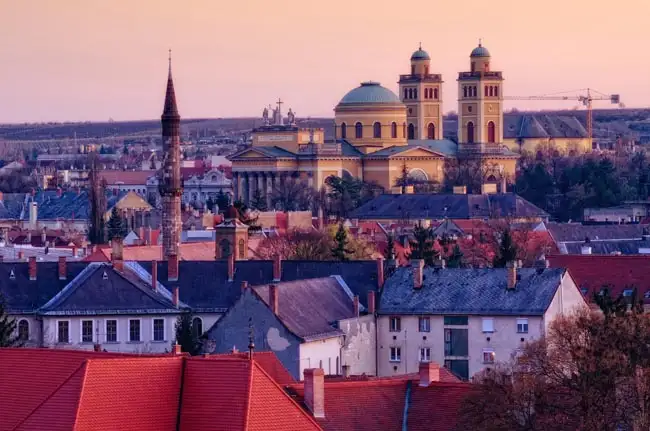
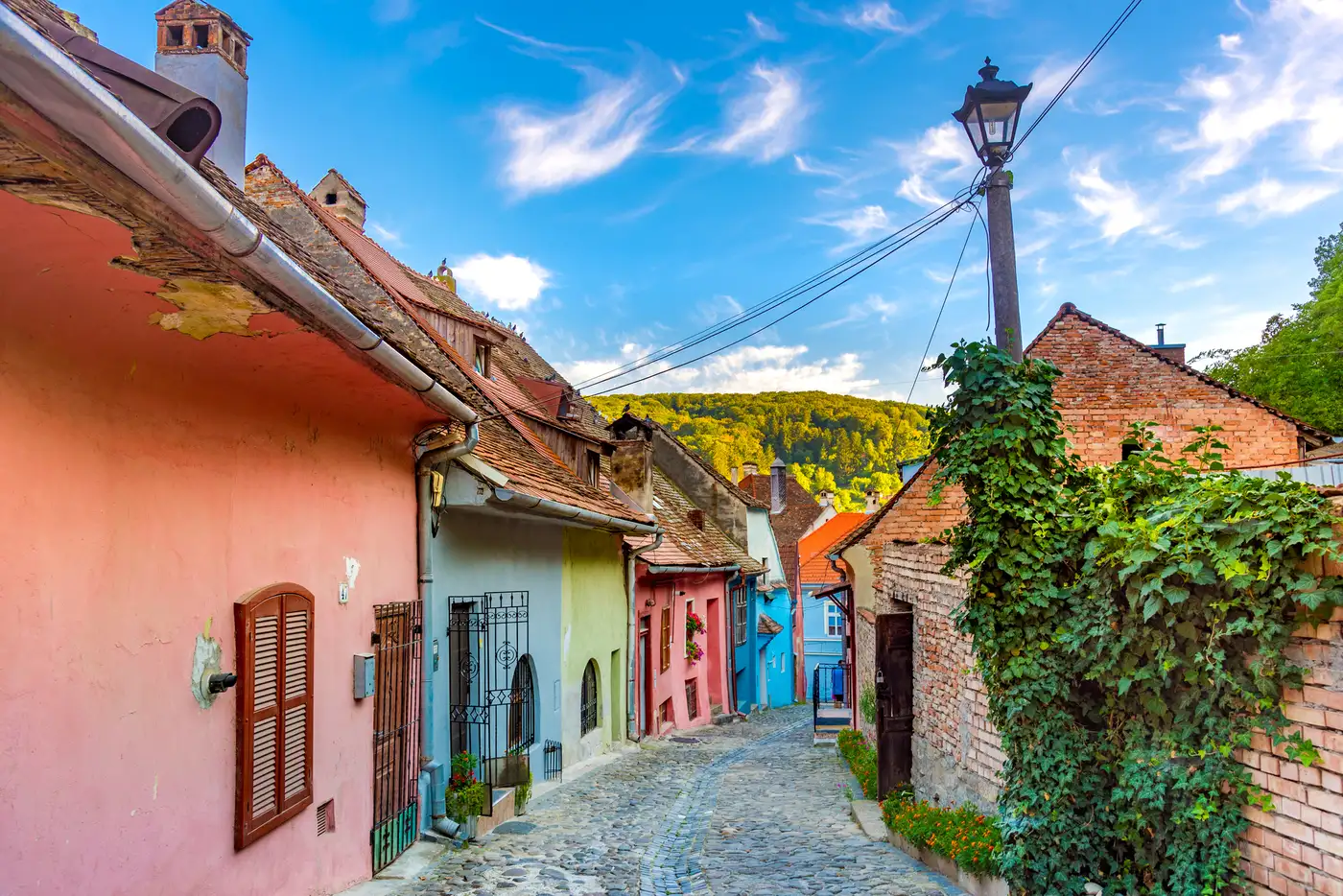
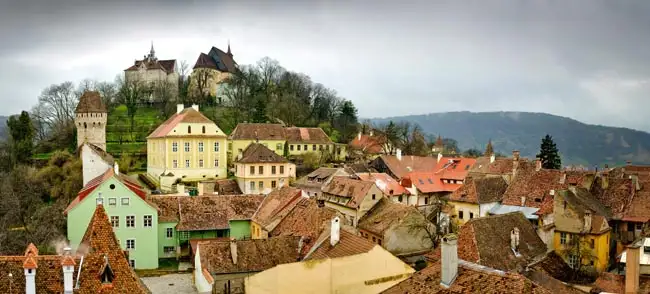
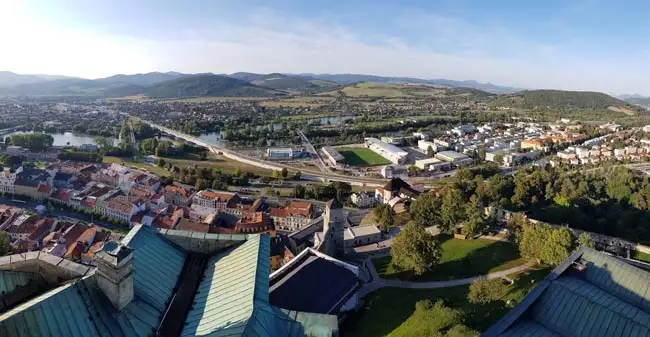
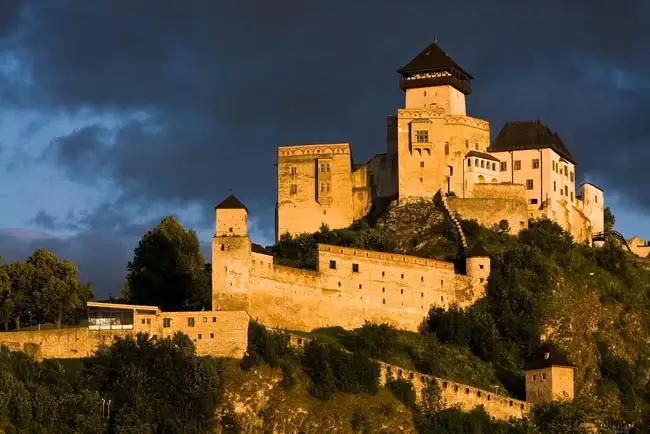
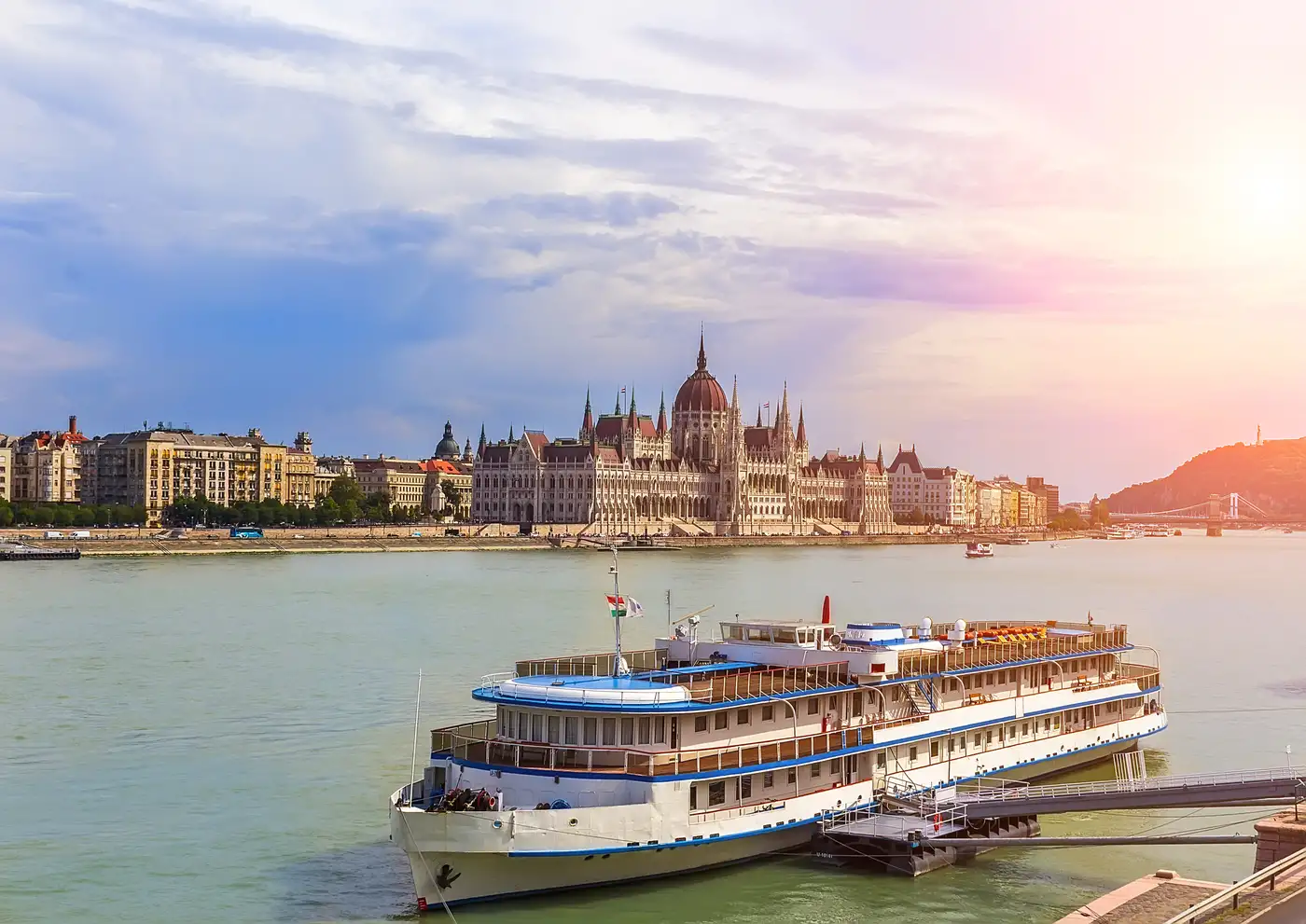
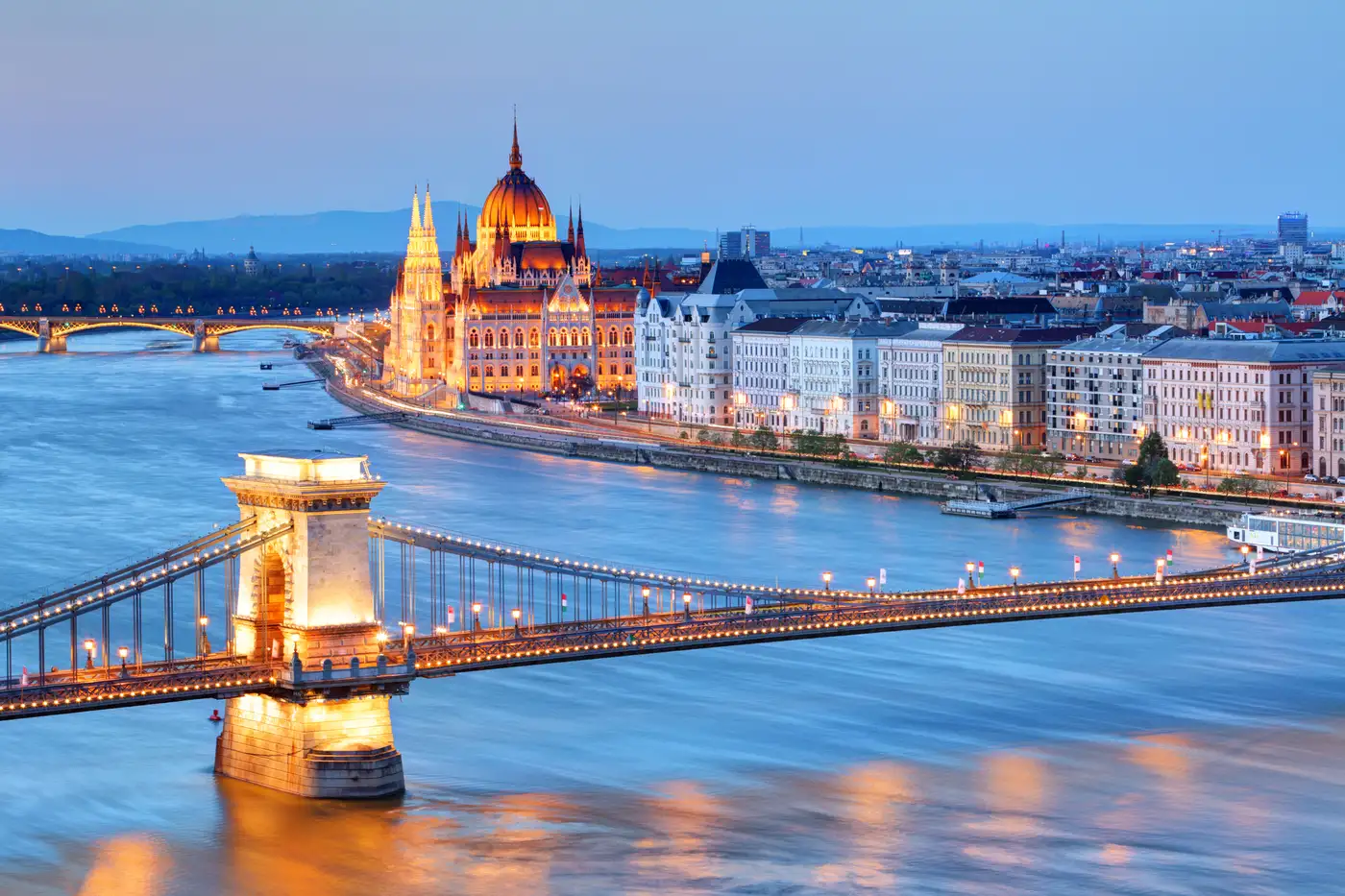
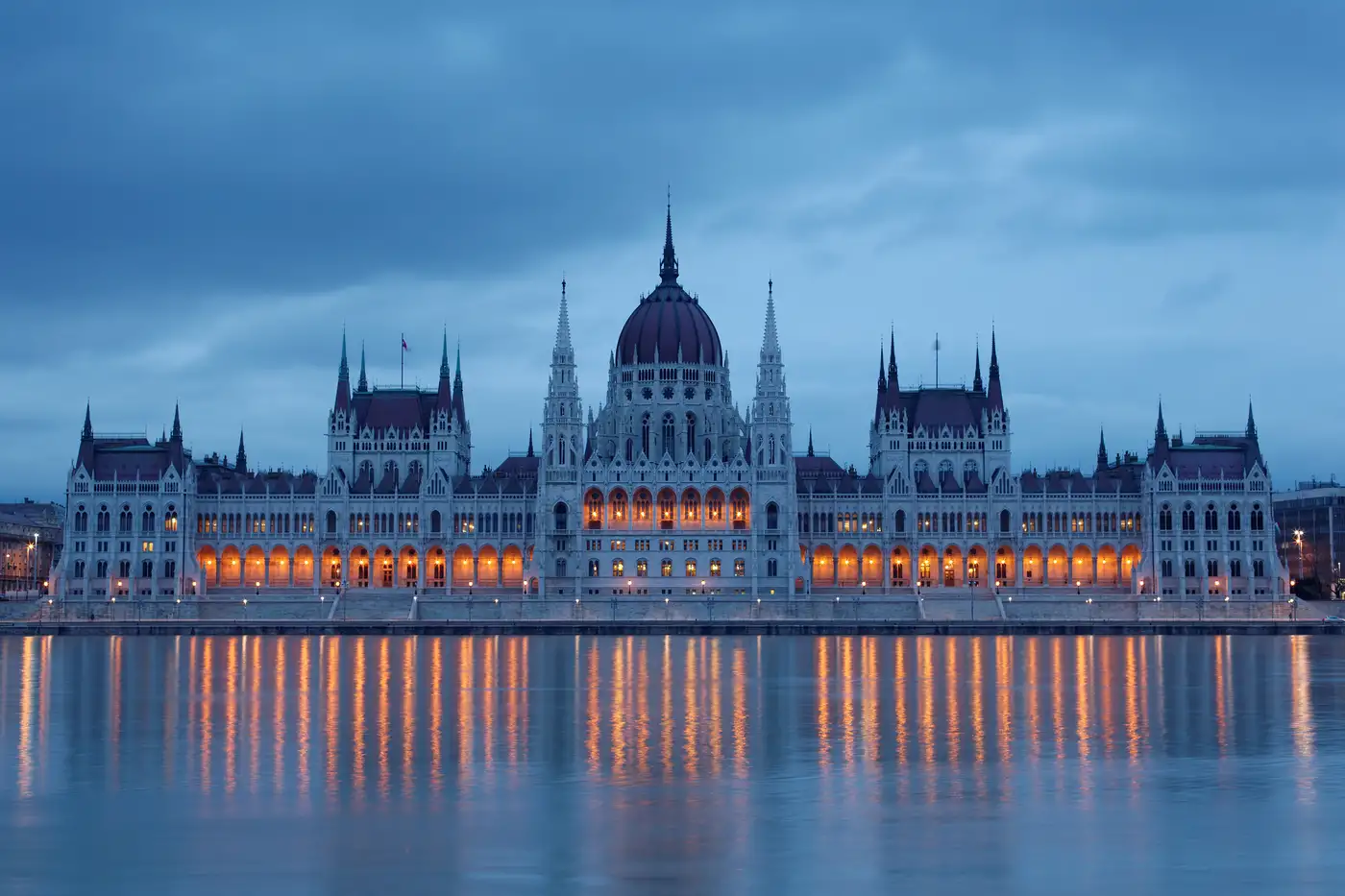

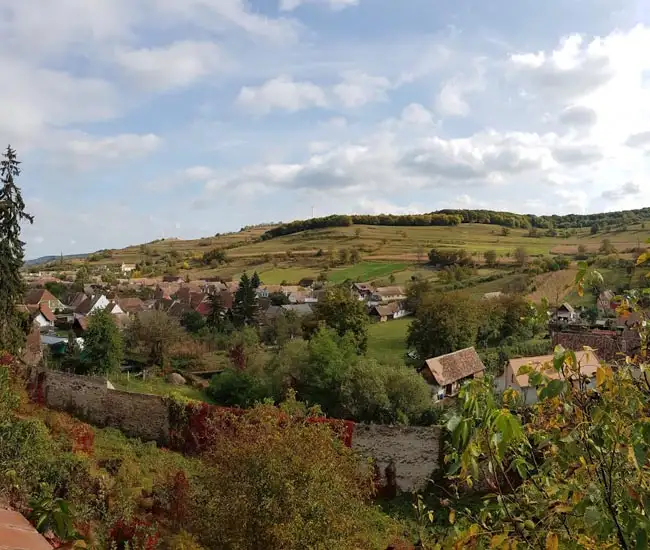
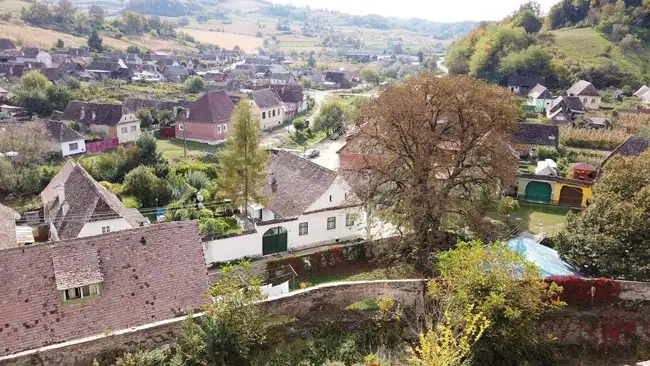
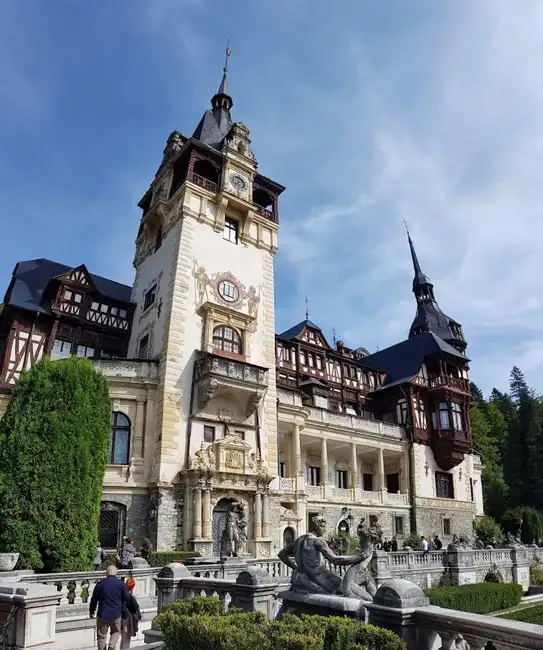
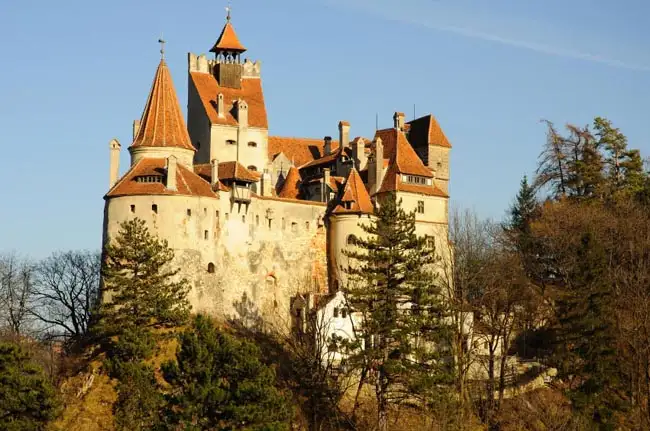
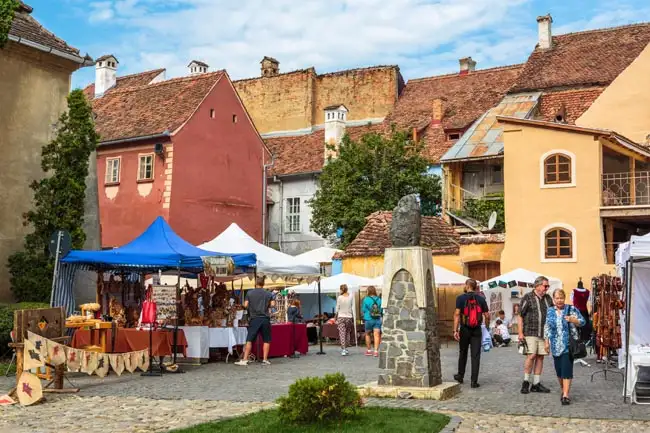
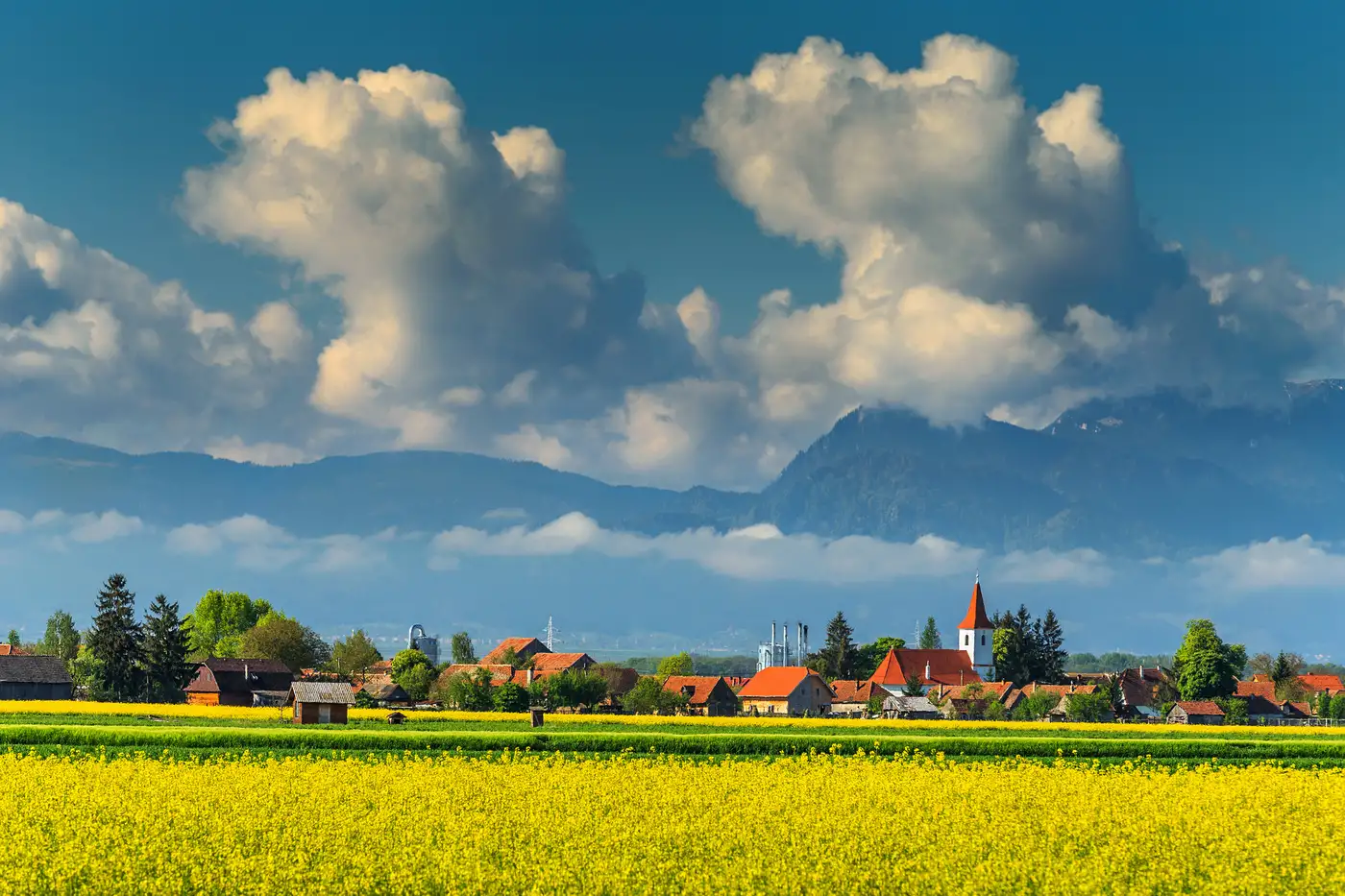
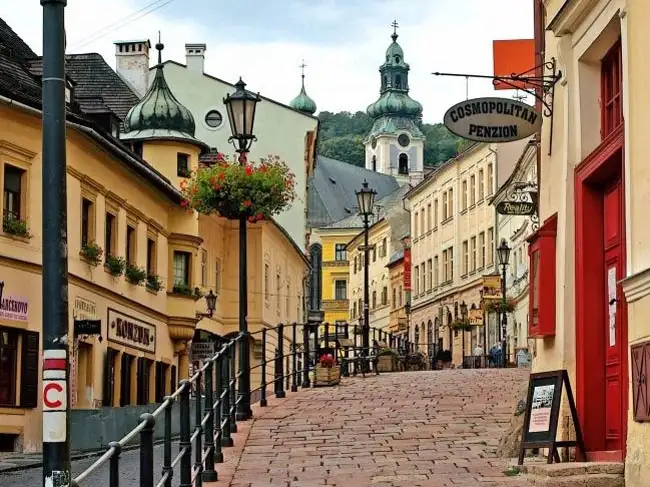
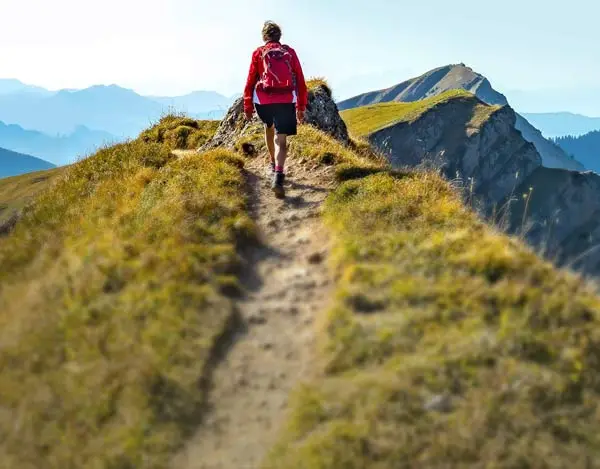
Book This Tour
- Final payment: Due 90 days prior to departure.
- Deposit: A non-refundable $500 CAD Deposit is required at booking.
- Optional Single Supplement: $2300 CAD (number of singles limited).
(View options forsingle travellers) - Transfering Tour or Date: Transferring to another tour or tour date is only permissible outside of 120 days prior to departure and is subject to a $100 CAD change fee.
(Read our cancellation policy)
Prices below are per person, twin-sharing costs in Canadian Dollars (CAD). Pricing does not include airfare to/from the tour and any applicable taxes.
Frequently Asked Questions
- What is the maximum number of participants on a trip?Most of our tours carry a maximum of 18 participants; some tours (ie hiking tours) top out at 16. In the event that we do not achieve our minimum complement by our 90-day deadline, we may offer group members the option of paying a "small-group surcharge" as an alternative to cancellation. If all group members agree, we will confirm the trip at existing numbers; this surcharge is refundable in the event that we ultimately achieve our regular minimum. If the small group surcharge is not accepted, we will offer a refund of your deposit or a different trip of your choice.
- Can I extend my tour either at the beginning or end? What about stopovers?Yes, you can extend your tour either at the beginning or the end and we can book accommodation in our tour hotel. Stopovers are often permitted, depending on air routing. Stopovers usually carry a "stopover" fee levied by the airline.
- How do I make a reservation? How and when do I pay?The easiest way to make a reservation is via our website; during office hours, you are also more than welcome to contact us by telephone.
A non-refundable deposit is payable at the time of booking; if a reservation is made within 90 days, full payment is required. Some trips require a larger deposit. If international airline bookings require a non-refundable payment in order to secure space or the lowest available fare, we will require an increase in deposit equal to the cost of the ticket(s).
Early enrolment is always encouraged as group size is limited and some trips require greater preparation time.
Once we have received your deposit, we will confirm your space and send you a confirmation package containing your trip itinerary, any visa/travel permit related documents, invoice, clothing and equipment recommendations, general information on your destination(s), and forms for you to complete, sign and return to us. Your air e-tickets (if applicable), final hotel list, final trip itinerary, and instructions on how to join your tour, will be sent approximately 2-3 weeks prior to departure. - What about cancellations, refunds, and transfers?Please review our cancellation policy page for details.
- I am a single who prefers my own room. What is a single supplement?All of our tours have a single supplement for those who want to be guaranteed their own room at each location.
This supplement is a reflection of the fact that most hotels around the world do not discount the regular twin-share rate for a room by 50% for only one person occupying a room. Most hotels will give a break on the price, but usually in the range of 25-30% of the twin-share rate. This difference, multiplied by each night, amounts to the single supplement.
The conventional amount can also vary from country to country and some destinations are more expensive than others for single occupancy. In order to be "single friendly," the supplements we apply are not a profit centre for us and we do our best to keep them as reasonable as possible.
On most tours we limit the number of singles available, not to be punitive, but rather because many hotels allow for only a limited number of singles; some smaller hotels at remote locations also have a limited number of single rooms available.
Please note that most single rooms around the world are smaller than twin-share rooms and will likely have only one bed. - Do you have a shared accommodation program?Yes! If you are single traveller and are willing to share, we will do our best to pair you with a same-gender roommate. Please note that should we fail to pair you, we will absorb the single supplement fee and you will default to a single room at no extra charge.
